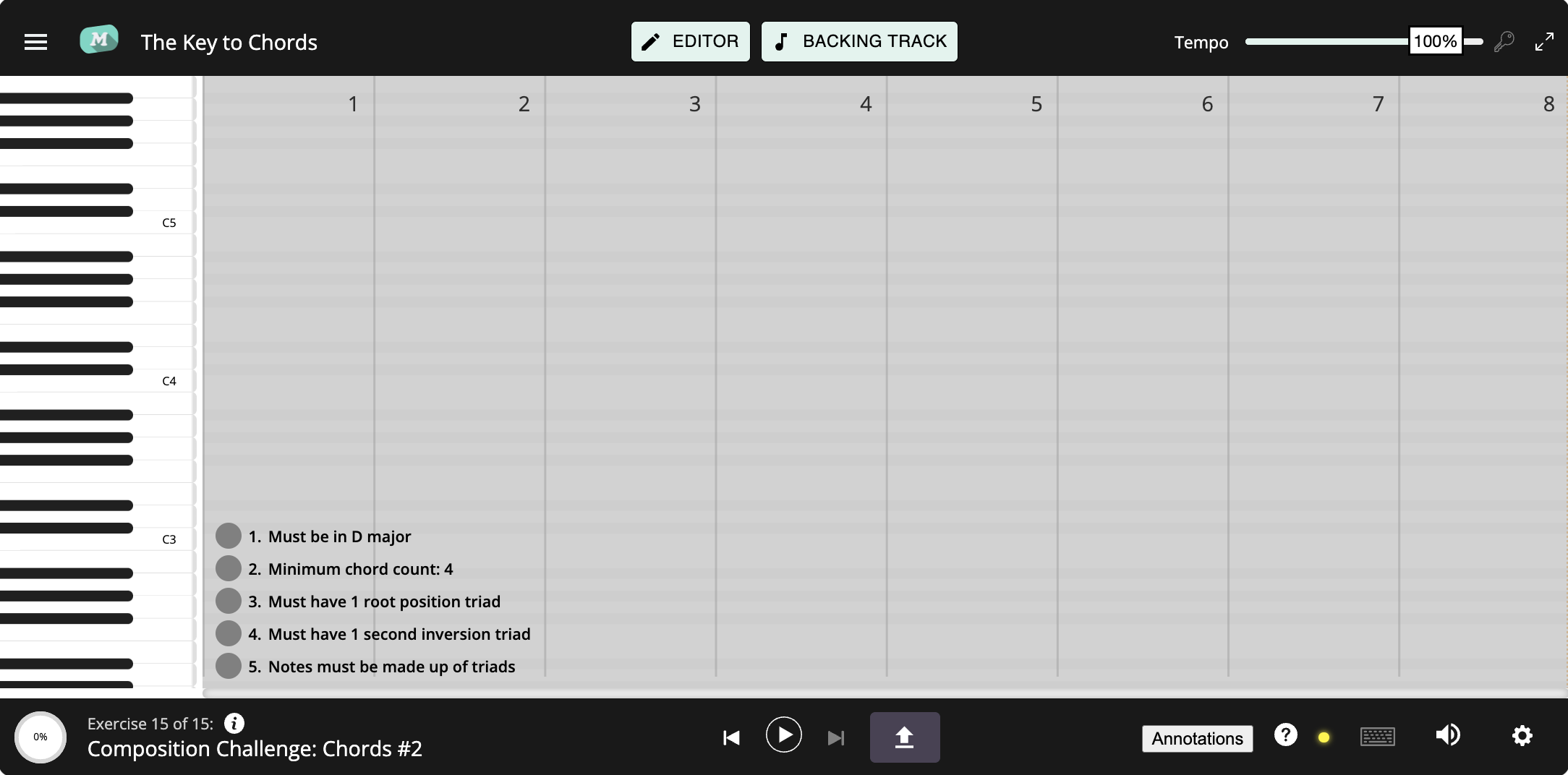Teaching Composition
 Updated
by Jack Keough
Updated
by Jack Keough
Test Driven Composition
Coming from the software development world, the term "test driven" is a way of repeatedly testing software against all test cases. In "Test Driven Composition" teachers are able to give students the freedom to create music while testing against a set of parameters that their composition has to pass in order to be considered complete.
Composing in the MIDI Editor
The most important aspect of music composition is the ability to create compelling pieces that resonate with listeners. In today's world of music composition, this is typically done so in a DAW, with the MIDI editor being one of its most widely used features. The MIDI editor allows composers to create, edit, and transform musical notes with ease, and access a wide array of virtual instruments making the process more creative than ever.
Composition Exercises
Rooted in theory and voiceleading, our composition exercises helps students keep creative while getting instant feedback on if their work is meeting certain standards. Powered by our Test Driven tool, teachers can give their students the creative freedom to write original music in a DAW while adhering to guidelines that you set. This allows you to challenge your students to compose pieces of music that must meet a set of criteria in order to be considered complete. For example, you could prompt students to write a melody in the key of F that includes both a leap and stepwise motion.
By emphasizing creativity guided by theory and providing students with the right tools and support, we aim to empower the next generation of composers to create music that is truly exceptional.
Why is this tool helpful?
The beauty of this tool is that it focuses on creative freedom while testing a students technical and conceptual knowledge in composition.

In the example above, students are prompted to compose a chord progression that adheres to the following 5 parameters:
- Must be in D Major
- Minimum chord count: 4
- Must have a root position triad
- Must have a second inversion triad
- All chords must be triads
Different Exercises Using this Tool
- Have your students compose a diatonic melody that fits with the backing track. This not only tests their melodic skills, but their ability to identify and write within the key as well.
- Have your students compose a chord progression that includes voiceleading techniques like contrary motion, oblique motion etc.
- Have your student compose a chord progression that avoids parallel 5ths, parallel octaves and tritones.
